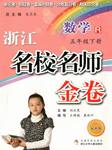题目内容
阅读下面短文,掌握其大意,从每题所给的A、B、C、D四个选项中,选出最佳选项,并在答题卡上将该项涂黑。
I was the fool at school, regarded as a special needs student. I was termed as such. Obviously, because I was not interested in school and did not care for my ________.
Over time, I started to believe in my stupidity. I ________ the fact that I was in special needs classes and poured it out as anger and depression. But one activity ________ this view of myself: chess.
I started to play chess with my father after school simply because I wanted to ________ him at something. My father was a ________ man, fond of physics, writing, religion, ..., almost every ________. He was called a walking dictionary. So, winning in chess against my father would be a ________ that I had intellectual power. On the small chessboard, I had a chance to ________ my so-called inability.
Game after game, I wanted to beat my father even more. I started to study chess books and play against a chess computer to ________ my skills. One weekend, I finally checkmated(将杀) my father on a ferry ride, which made me feel ________.
Two years later, I became the second board on my school chess team, with our top board being the best high school player in the state. But before the tournament season, our top player ________ to come. There came my chance to play as top board against the best players in other states.
I was determined to show who I had become: a(n) ________ person able to win with calculation, logic and will. My most ________ game came in the final round. Our team was facing a high school which only excellent students attended. It was ________ a match between a special needs student and a smart soul. My opponent(对手) was playing well and kept ________ while I kept defending to keep my king safe. He spent long trying to break down my defenses, but could not find the final push. I ________ with more defensive moves, trying to make it as difficult for him as possible. With little ________ left, he started to make rapid moves. ________ he could make the final decision, he ran out of time. Honestly, as his clock flag fell, I jumped up out of my seat and kissed the floor out of excitement. Of course it was not the most sportsmen-like ________, but I could not control my emotions.
While holding my winner’s cup, I knew I was not ________. The inferiority complex(自卑感) had melted away, and I realized that underneath our thoughts, each person is a genius.
1.A. habitsB. gradesC. plansD. benefits
2.A. noticedB. explainedC. acceptedD. ignored
3.A. changedB. supportedC. questionedD. showed
4.A. pleaseB. comfortC. beatD. disturb
5.A. smartB. strictC. quietD. strong
6.A. methodB. topicC. eventD. field
7.A. dreamB. lessonC. theoryD. sign
8.A. proveB. exposeC. overcomeD. promote
9.A. teachB. sharpenC. chooseD. invent
10.A. overjoyedB. disappointedC. puzzledD. interested
11.A. promisedB. managedC. happenedD. failed
12.A. braveB. luckyC. activeD. intelligent
13.A. terribleB. memorableC. dangerousD. popular
14.A. normallyB. possiblyC. actuallyD. partly
15.A. attackingB. smilingC. pausingD. escaping
16.A. returnedB. quitC. wonD. exchanged
17.A. patienceB. timeC. energyD. wisdom
18.A. OnceB. UntilC. BeforeD. Unless
19.A. spiritB. thoughtC. commentD. behavior
20.A. proudB. stupidC. brightD. lazy
 浙江名校名师金卷系列答案
浙江名校名师金卷系列答案 全优冲刺100分系列答案
全优冲刺100分系列答案
